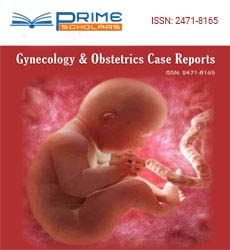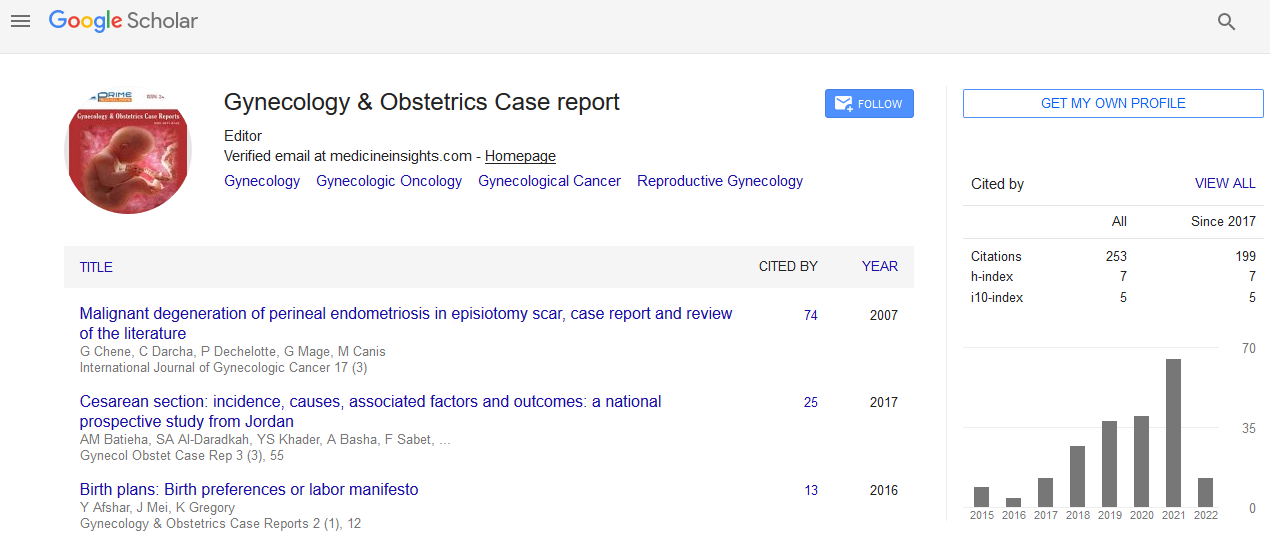Opinion - (2025) Volume 11, Issue 1
3D Organoids as Preclinical Models for Ovarian Cancer Research
Chiara Adam*
Department of Obstetrics and Gynecology, George Emil Palade University of Medicine, 540278 Târgu Mure?, Romania
*Correspondence:
Chiara Adam, Department of Obstetrics and Gynecology, George Emil Palade University of Medicine, 540278 Târgu Mure?,
Romania,
Email:
Received: 27-Dec-2024, Manuscript No. ipgocr-25-22696;
Editor assigned: 30-Dec-2024, Pre QC No. ipgocr-25-22696(PQ);
Reviewed: 10-Jan-2025, QC No. ipgocr-25-22696(Q);
Revised: 17-Jan-2024, Manuscript No. ipgocr-25-22696(R);
Published:
24-Jan-2025
INTRODUCTION
Ovarian cancer remains one of the most lethal gynecological malignancies worldwide, primarily due to late-stage diagnosis, high recurrence rates and the development of resistance to conventional therapies. Preclinical models that closely replicate human tumor biology are essential for understanding disease mechanisms, discovering biomarkers and developing novel therapeutics. In this context, 3D organoids have emerged as a transformative tool in ovarian cancer research, offering a more physiologically relevant alternative to traditional two-dimensional (2D) cell cultures and animal models [1]. Organoids are three-dimensional structures derived from stem cells or cancer cells that can self-organize and mimic the architecture, genetic profile and functionality of the tissue of origin. In ovarian cancer, Patient-Derived Organoids (PDOs) are established from primary tumors, ascites, or metastatic sites and cultured under conditions that support the growth of epithelial tumor cells.
These 3D cultures preserve key histopathological features of the original tumors, including cellular heterogeneity, tumor-specific mutations and gene expression profiles, making them a valuable preclinical model for studying ovarian cancer biology [2]. One of the key advantages of organoids over traditional models is their ability to maintain the intratumoral heterogeneity that characterizes ovarian cancer. High-grade serous ovarian carcinoma (HGSOC), the most common and aggressive subtype, is known for its complex genomic alterations and cellular diversity. Organoids can recapitulate this complexity, allowing researchers to study the interplay between different cell populations and their contributions to tumor progression and therapeutic resistance. Furthermore, organoids can be generated from various stages of disease, including treatment-naÃÂ?¯ve and chemoresistant tumors, enabling longitudinal studies and the development of personalized medicine approaches [3].
DESCRIPTION
The use of ovarian cancer organoids has significantly advanced drug screening and therapeutic testing. These models offer a high-throughput, cost-effective and scalable platform for evaluating the efficacy and toxicity of chemotherapeutic agents, targeted therapies and immunotherapies. Importantly, organoids have demonstrated the ability to predict patient responses to treatment more accurately than conventional cell lines. This predictive capability is being harnessed to guide individualized treatment regimens, potentially improving clinical outcomes for patients with ovarian cancer [4]. In addition to drug testing, organoids are instrumental in exploring the molecular mechanisms underlying ovarian cancer initiation, progression and metastasis.
They provide a controlled environment in which researchers can manipulate specific genes or signalling pathways and observe the resulting phenotypic changes. CRISPR/Cas9 gene editing technologies have been successfully applied to organoids, facilitating functional genomics studies and the identification of novel therapeutic targets. Moreover, co-culture systems incorporating stromal cells, immune cells, or vasculature components are being developed to better replicate the tumor microenvironment and investigate cell-cell interactions in ovarian cancer. Despite their numerous advantages, organoid technology also faces several challenges that must be addressed to fully realize its potential. The establishment and maintenance of organoid cultures can be technically demanding, with variability in growth efficiency and differentiation capacity between samples. Standardization of culture protocols, media compositions and quality control measures is essential to ensure reproducibility and comparability across studies.
Additionally, while organoids capture many aspects of tumor biology, they lack the full complexity of in vivo systems, particularly with regard to immune responses and systemic interactions. To overcome these limitations, researchers are increasingly integrating organoid models with other technologies, such as organ-on-a-chip platforms and in vivo xenografts. These hybrid approaches aim to bridge the gap between in vitro and in vivo studies, providing more comprehensive insights into ovarian cancer biology and treatment. Furthermore, large-scale biobanking of ovarian cancer organoids, along with associated clinical and genomic data, is facilitating the development of precision oncology strategies and enabling collaborative research efforts [5].
CONCLUSION
The development and application of 3D organoid models have revolutionized preclinical ovarian cancer research by providing physiologically relevant platforms that closely mimic the in vivo tumor microenvironment. These models offer significant advantages over traditional 2D cultures, including enhanced cellular architecture, gene expression profiles and drug response predictability. As patient-derived organoids (PDOs) continue to evolve, they hold great promise for personalized medicine approaches, enabling tailored therapeutic strategies and improving clinical outcomes. Despite current limitations such as scalability, cost and the need for standardized protocols, ongoing advancements in organoid technology and integration with high-throughput screening and genomic tools will further enhance their utility. Ultimately, 3D organoids represent a transformative tool in bridging the gap between bench research and clinical application in ovarian cancer treatment.
Acknowledgement
None.
Conflict of Interest
None.
REFERENCES
- Ibeanu O, Modesitt SC, Ducie J, Von Gruenigen V, Agueh M, et al. (2011) Hormone replacement therapy in gynecologic cancer survivors: why not? Gynecol Oncol 122(2):447-454.
Google Scholar Cross ref Indexed at
- Rajbanshi S, Norhayati MN, Nik Hazlina NH (2021) Risk perceptions among high-risk pregnant women in Nepal: a qualitative study. BMC Pregnancy Chil 21: 1-8.
Google Scholar Cross Ref Indexed at
- McDonald S, Rushby J, Li S, de Sousa A, Dimoska A, et al. (2011) The influence of attention and arousal on emotion perception in adults with severe traumatic brain injury. Int J Psychophysiol 82(1): 124-131.
Google Scholar Cross Ref Indexed at
- Heaman M, Gupton A, Gregory D (2004) Factors influencing pregnant women's perceptions of risk. MCN: Am J Matern Child Nurs 29(2): 111-116.
Google Scholar Cross Ref Indexed at
- RadoÅ?-Pokracka M, Adrianowicz B, PÅ?onka M, DaniÅ? P, NowakC M, et al. (2019) Evaluation of pregnancy outcomes at advanced maternal age. Maced J Med Sci 7(12): 1951.
Google Scholar Cross Ref Indexed at
Citation: Citation: Adam C. (2025) 3D Organoids as Preclinical Models for Ovarian Cancer Research. Gynecol Obstet Case Rep. Vol.11
No.1:04.
Copyright: Copyright: © Adam C. This is an open-access article distributed under the terms of the Creative Commons Attribution License,
which permits unrestricted use, distribution and reproduction in any medium, provided the original author and source are
credited.

